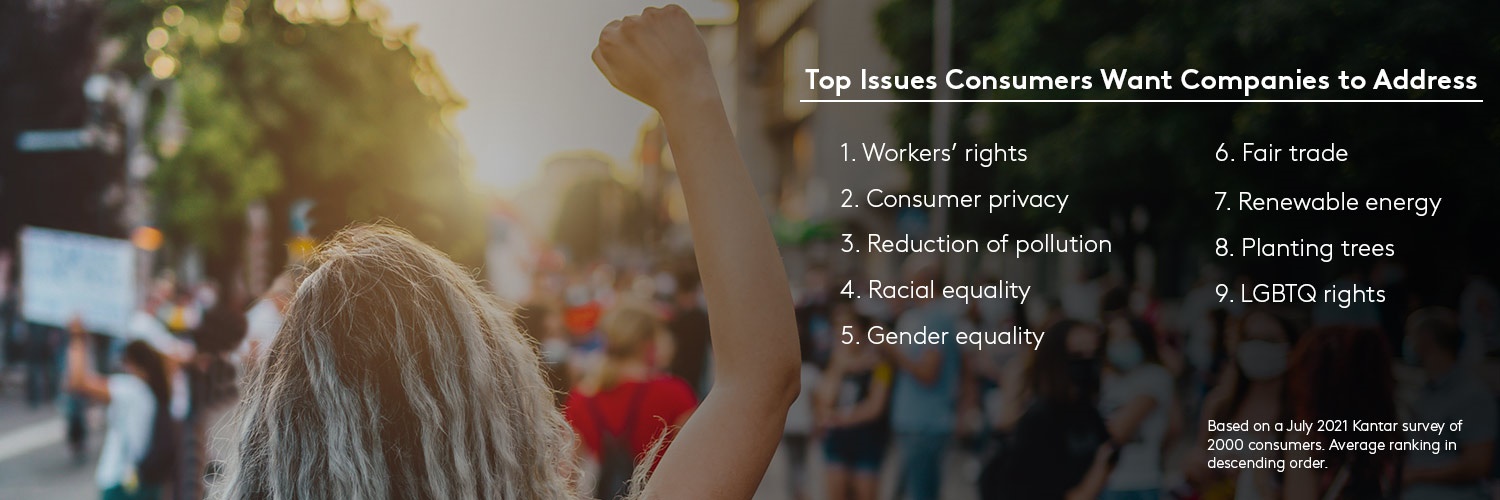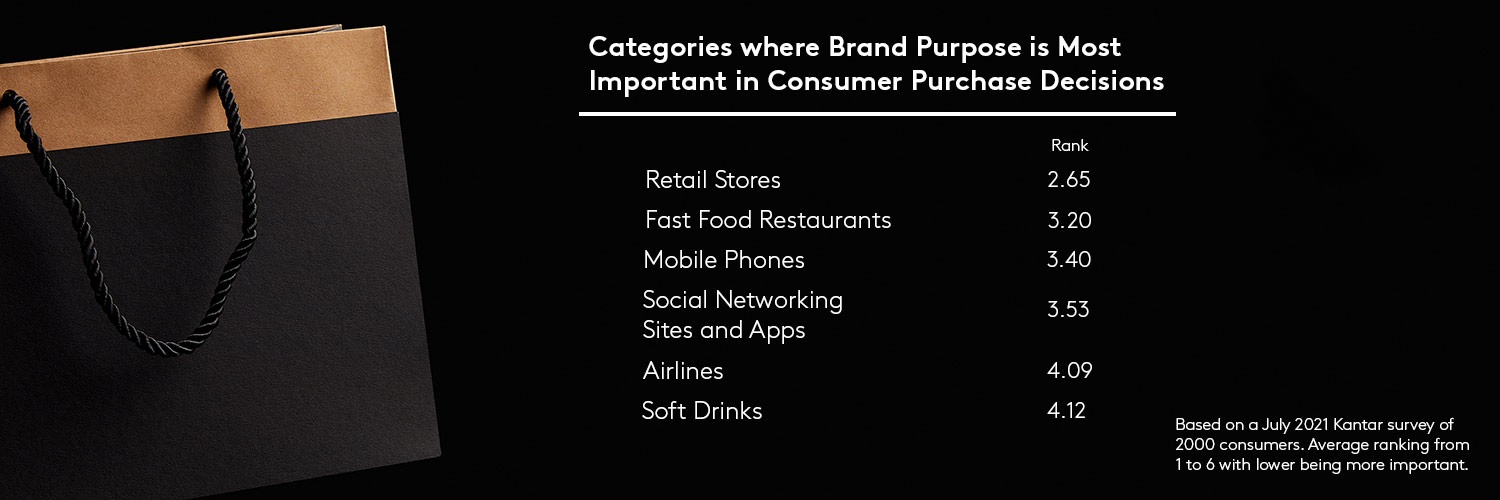Brand purpose, the concept that companies should contribute to the greater good of society beyond just selling products, has been around for decades. Yet it has gained a new importance and urgency in our era thanks to shifting consumer attitudes toward the role of business in society, especially as confidence in the ability of traditional institutions to solve global problems such as climate change, the COVID-19 pandemic and pervasive social injustice has waned.
To help better understand today’s consumer perceptions of brand purpose, Kantar conducted a study of 2,000 U.S. consumers from across different age ranges, ethnicities and regions. Although we defined purpose as ‘the reason a brand exists beyond making money,’ we found that purpose can mean different things to different people and is more important to some groups than others. In addition, perceptions of purpose can also vary by product category.
Not unexpectedly, younger people think brand purpose is important at much higher rates than their older cohorts. Seventy-six percent of 18-34 year-olds rate brand purpose as very or somewhat important compared to only 49% of people aged 55+.
Likewise, there is a difference across ethnicities. Seventy-seven percent of Hispanics and 75% of Black Americans rate brand purpose as very or somewhat important, compared to 61% of whites and 62% of Asians. Further, 57% of Hispanics say they would avoid doing business with companies that do not agree with their values compared to only 45% of white respondents.
The study also shows that there are different issues related to purpose (as well as corporate social responsibility, as the two areas often intersect) that may be either more or less important depending on societal group. At the time of our research in July 2021 on average people cited workers’ rights as the most important issue that companies could help with, followed by consumer privacy and reducing pollution. However, Black Americans are much more likely to rank racial equality as the most important topic (35% vs. 10% of white respondents) while older Americans, aged 55+, are more likely to mention consumer privacy as the most important issue (27% vs. only 11% for those aged 18-34). Regionally, concerns about pollution are stronger in the Western United States, where 15% of respondents ranked it as the most important issue vs. 11% of consumers in the Northeast.

There also appear to be differences in the role that purpose plays in consumer choice across product and service categories.
People are more likely to ‘consider purpose’ when choosing a retailer to shop either online or in person (55%) than when buying a car or choosing consumer electronics (both 47%). Although this phenomenon is largely driven by 18-34 year-olds (68% vs. 43% of 55+).
Likewise, when we ask people to rank product and service categories by how important a brand’s purpose is to what they choose to purchase, we see quite a difference in average rank across categories, with retail stores again being on top and airlines and soft drinks ranking last.

Lastly, at the individual rather than societal level, we find that purposeful consumers are more attuned to purposeful brands, as respondents who claim to make purposeful choices in their own lives are more likely to perceive a brand’s purpose to be important. For example, those who say that working for a company with purpose is important are much more likely to say that a brand’s purpose is also important (76% to 63%) and are more likely to avoid doing business with companies that do not share their values (55% to 47%).
Based on these findings, and perhaps intuition, it may be tempting for brands and companies to craft their purpose statement to a particular time or audience. Or multiple audiences at a given time. However well-intentioned these approaches may be, they are contrary to best practices since they run the risk of diluting your brand purpose by making it either subject to frequent changes based on current consumer thinking or ‘all things to everyone’. Rather, in order to claim a purpose with authenticity brands must take a stand on what their purpose is and formulate it to be relevant now and in the future, even if the market context and dynamics change.
That being said, while your purpose statement itself should not be crafted to a particular audience, or changed based on the audience, it can and, in fact, probably should be articulated in different ways in both messaging and action depending on the audience and context. Hence, the importance of Kantar’s study findings. Consumers are not monolithic in their feelings on virtually any subject, and this hold true for brand purpose as well. To successfully bring brand purpose to life, companies must have a thorough understanding of the attitudes, needs and behavior of their various audiences and develop communications and initiatives that express their purpose in a way that will resonate with each group and achieve their desired results.
Want to learn more about how to ensure your brand purpose efforts are both understood by and authentically engage your intended audience? Fill out the form below to download Kantar’s new report “Closing the Purpose Gap: How to make brand purpose resonate”.

